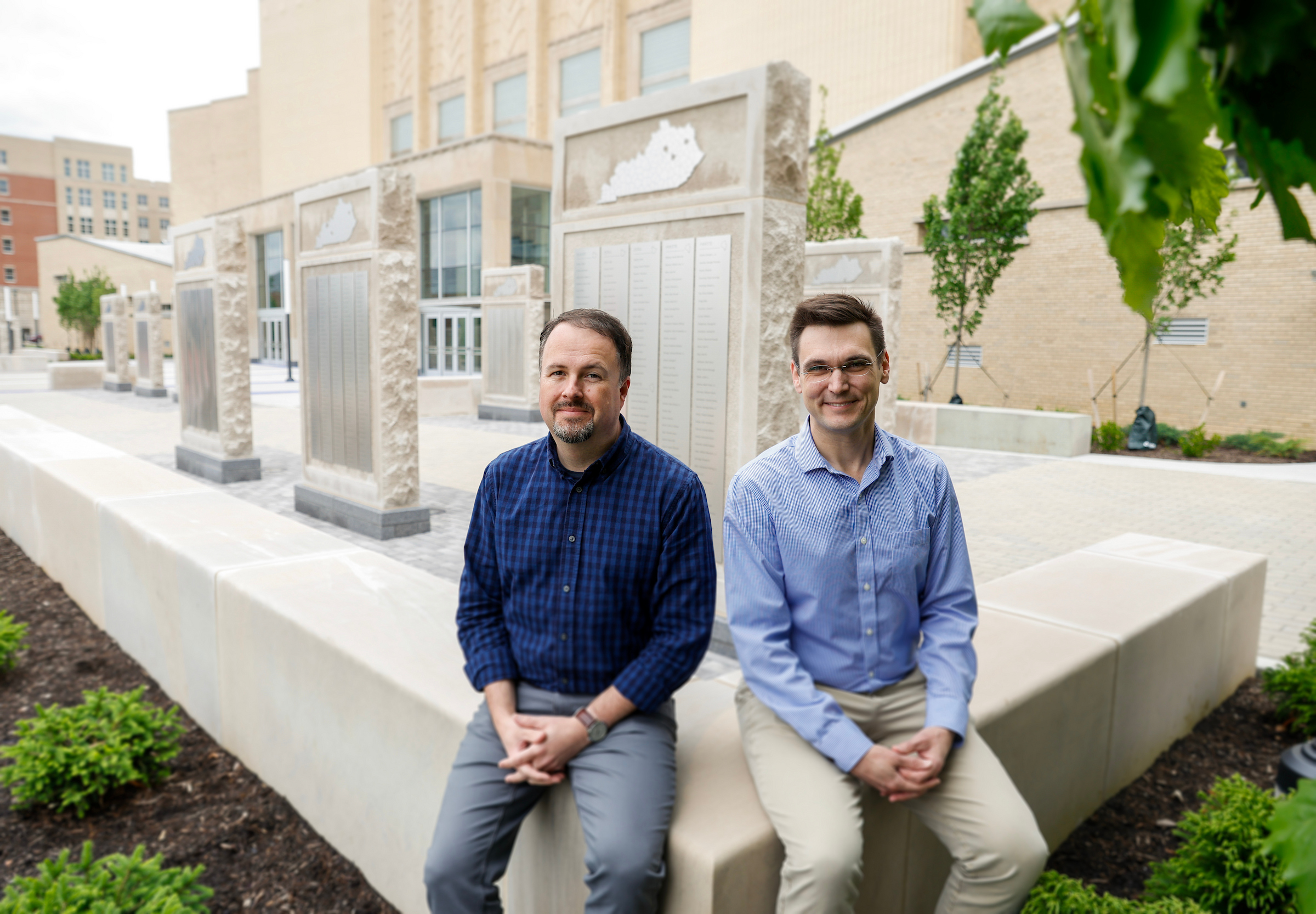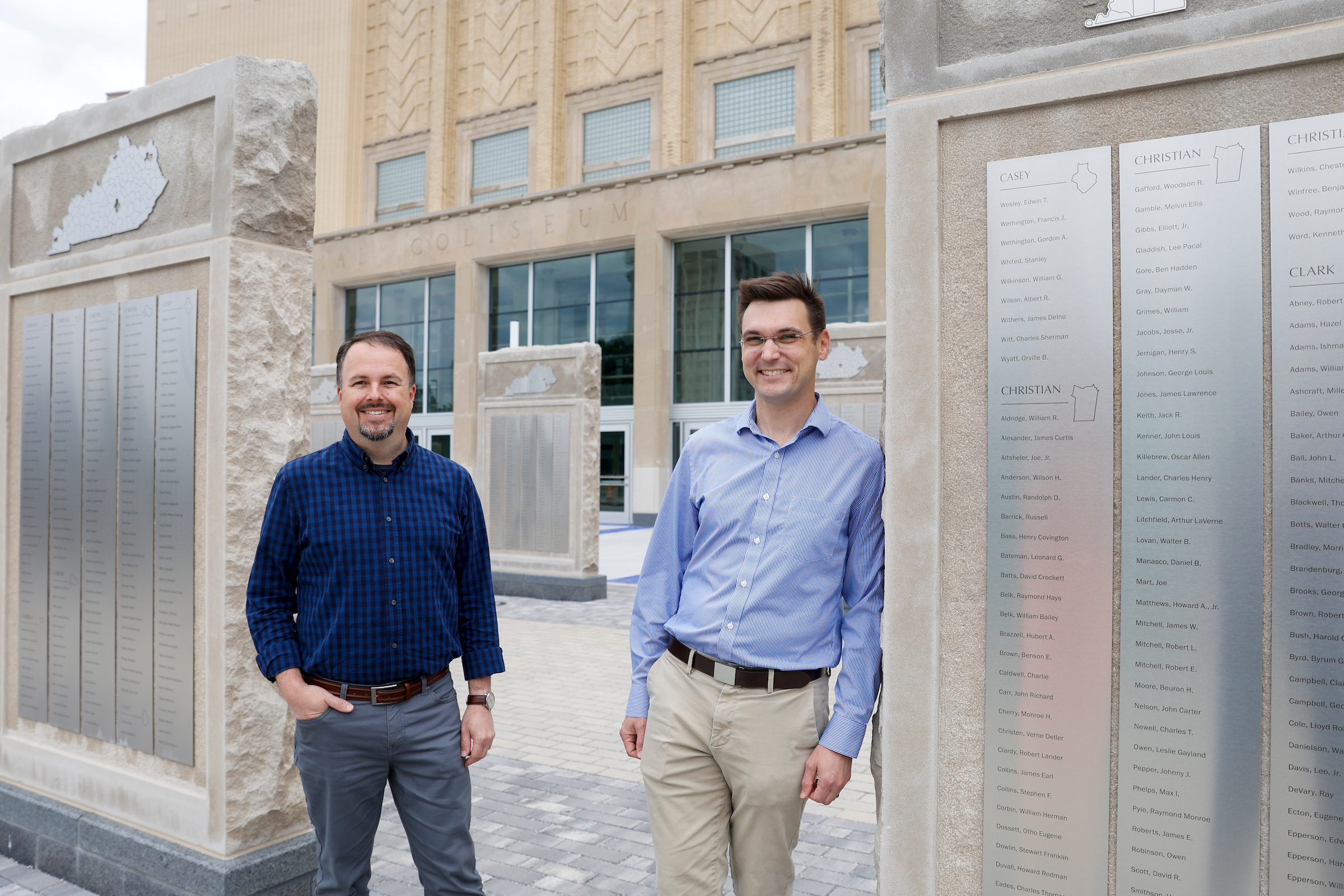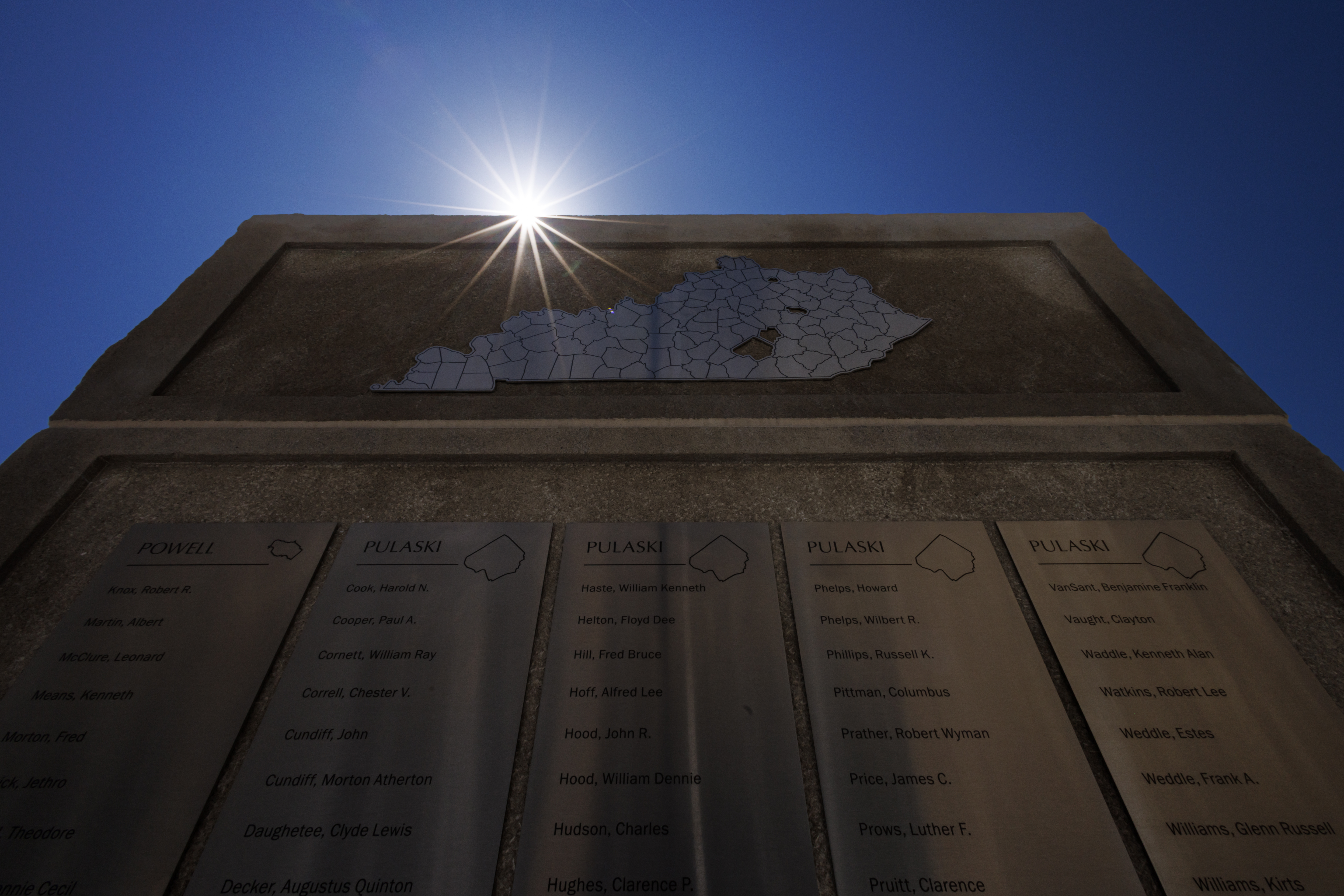
6 minute read
The New Memorial at Memorial
By Sally Scherer
Franklin Sousley, a marine from Hill Top, Kentucky, joined the United States Marine Corps in 1944. His unit landed in Iwo Jima in 1945 and fought in the battle to capture the island.
His story, one of commitment and bravery, was shared at the rededication of Historic Memorial Coliseum in April.
Sousley was one of the six marines who raised the American flag on the island’s Mount Suribachi in the final stages of the Pacific War. That moment is forever immortalized in the iconic World War II photograph.
A statue of that image stands in Arlington, Virginia with an inscription reading, “Uncommon valor was a common virtue.”
The private first class was killed in action by a Japanese sniper less than a month after the photograph was taken.
University of Kentucky President Eli Capilouto told Sousley’s story at the rededication, reflecting on his sacrifice and that of other Kentucky war heroes.
“These lives, and these moments — the raw and deeply human ones, born not out of spectacle but of calling — are not meant to fade. They are meant to be preserved, revered, immortalized. Not only for what and who they were, But for what they ask of us now to remember,” Capilouto said.
Sousley’s name is one of nearly 10,000 WWII departed soldiers, sailors, marines and airmen that appeared in Historic Memorial Coliseum. Originally, University of Kentucky Associate Professor of Mechanical Engineering John Sherman Horine handwrote the names.
As Capilouto described it: “His tools were simple, a steel-nibbed pen, an inkwell and blank panels of paper nearly five feet long and four feet wide. From September 1949 to March 1950, Professor Horine's desk became a kind of altar.
“Like a prayer in motion, Professor Horine inscribed the names of Kentucky's fallen World War II heroes, one by one, line by line, not just a list, but a litany — carrying the weight of a state’s grief,” Capilouto said.

Making Changes
The panels of names were removed, along with other memorial plaques honoring Kentucky’s fallen in military conflicts through 2001, before the $82 million renovation was made to the building’s interior.
Displaying the names in a new way was one of the objectives for Lexington’s RossTarrant Architects, the firm renovating the building. Architect Greg Hosfield ’02 ’07 DES and Landscape Architect Kevin McCalla ’05 AFE were part of the team.
“A lot of people were concerned, and rightly so, that we get this correct,” said Hosfield, project manager. “We made a goal to improve it, to make it accessible, not just physically, but to put it outside of the building’s locked doors.”
Prior to the beginning of the renovation, the 75-year-old panels were removed from the walls. Ruth Bryan, university archivist, oversaw that delicate process.
Then, Hosfield, McCalla and others set out to create a new memorial.
“It was a team effort,” said McCalla. “We were really strategic about designing a memorial plaza that would honor the sacrifices of generations of Kentuckians in this prominent campus setting.”
The team included Bryan, UK Architect Warren Denny, Capilouto, UK’s Vice President for Finance and Administration Eric Monday and representatives from UK Athletics including Deputy Athletics Director Marc Hill and Senior Associate Athletics Director for Operations Donnie Mefford.
A far cry from the red brick Alumni Gymnasium across the street where the men’s basketball team had been playing, Memorial Coliseum was designed by the architectural team of Lexington architects John T. Gillig and Hugh Meriweather with assistance of UK architectural engineer Ernst Johnson, according to “House of Champions: The Story of Kentucky Basketball’s Home Courts” by Kevin Cook.
The building’s masonry work and art deco design make it “a beautiful building and one of the great buildings on campus,” said Hosfield.
Added McCalla: “Memorial Coliseum is a historic icon on campus. It’s an example of how beautiful a masonry building can be.”
Architect Greg Hosfield, left, and Landscape Architect Kevin McCall pose in front of the new memorial plaza at Historic Memorial Coliseum. The men are part of the team that renovated Memorial and created the area that includes 24 two-sided monuments featuring the names of 10,000 Kentuckians who died in WWII.

Selecting A Location
The entrance facing Euclid Avenue (now the Avenue of Champions), which used to be an auto court where cars could pull up to the front entrance and drop people off, seemed like a perfect location. It is set aside from the sidewalk and is large enough to display multiple monuments and provide some contemplative space for those visiting the monuments.
The memorial area design needed to complement the building’s façade. A graphic artist was consulted about the design of the monument and National Park Service standards were met.
McCalla explained that the National Park Service has a variety of standards and guidelines for the management and protection of national parks and monuments. The standards include specifics such as size and style of lettering fonts and the location of wording on a monument surface, all designed to make them “as welcoming as possible to the population,” the 2006 management policies say.
Limestone from a quarry in Indiana was used for the monuments. Stainless steel panels were laser engraved with the names.
Just as on the 1950 panels, the names on the monuments are listed by Kentucky county. A map of Kentucky is featured at the top of each monument with the monument counties outlined.
“In Kentucky, people have a heartfelt connection to the county where they’re from,” said McCalla. “The original documents were organized by county, and it was an important tradition to maintain.”
STOP AND PAY HONOR
A graphics consultant created the panels with the engraved names which are on both sides of the stone monuments. They were checked for accuracy again and again.
“It’s an invaluable monument to the lives that were lost,” said Hosfield. “Everyone with the project understood the gravity of it and the importance of making sure it was all correct.”
Native plants were added to the landscape and blue glass pavers are placed throughout the area along with blue lighting which will be used to celebrate athletic victories. As part of the building modernization, the big stainless-steel doors were repaired and now enter into a full vestibule. McCalla and Hosfield hope that the monument area will bring new activity to the entrance at the Avenue of Champions.
“We hope that it touches the lives of people,” said Hosfield. “We hope they don’t just walk by the building, but that they stop and pay honor to what so many people have given.” ■








